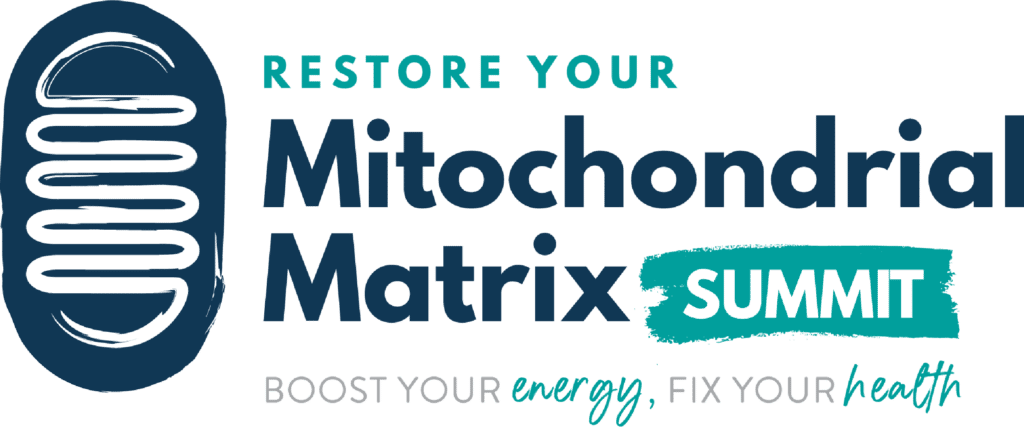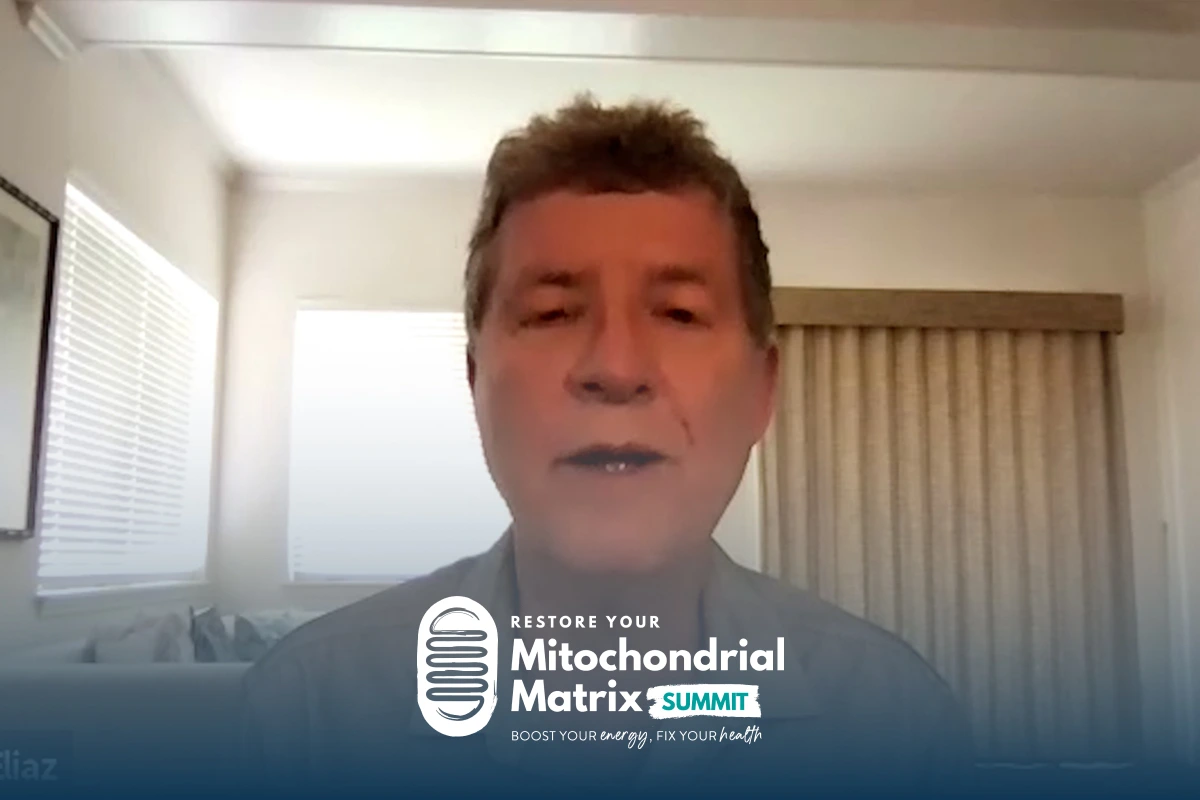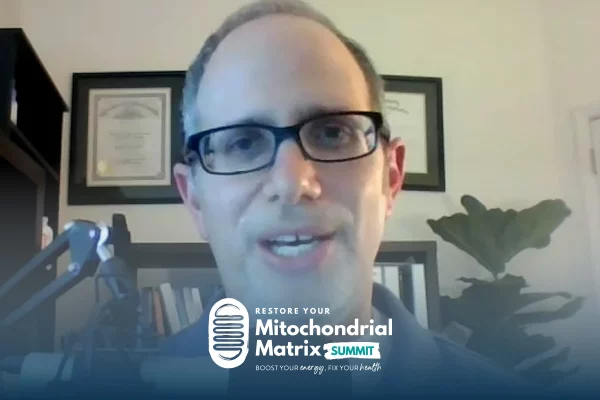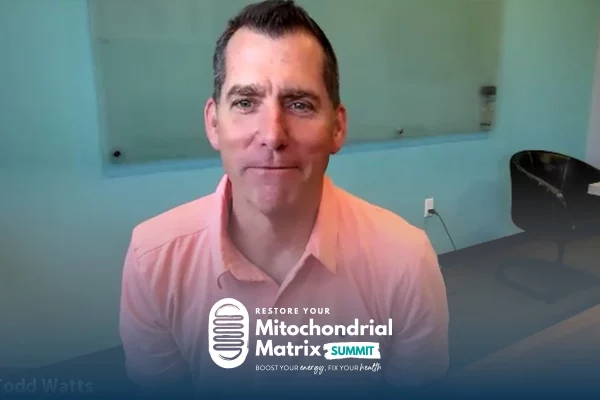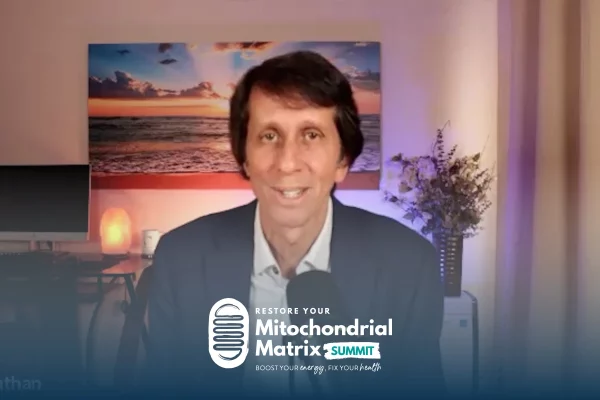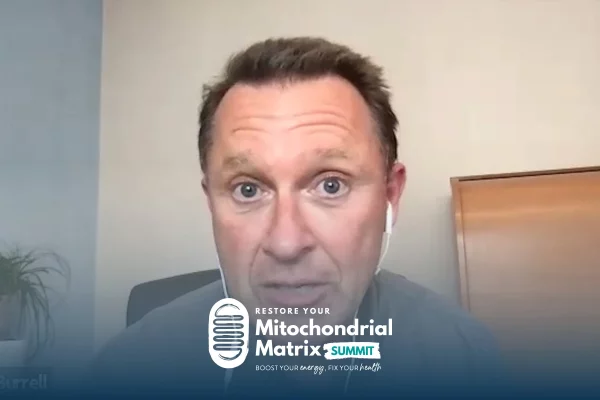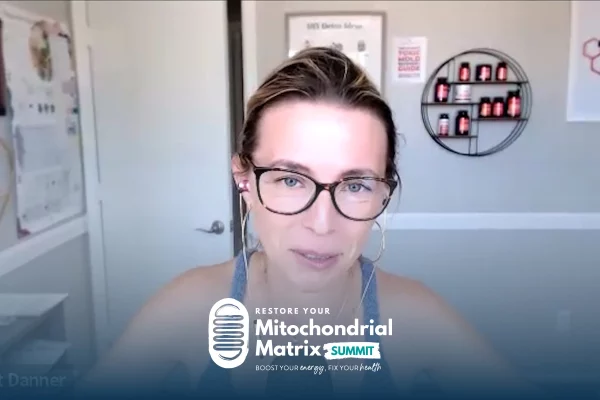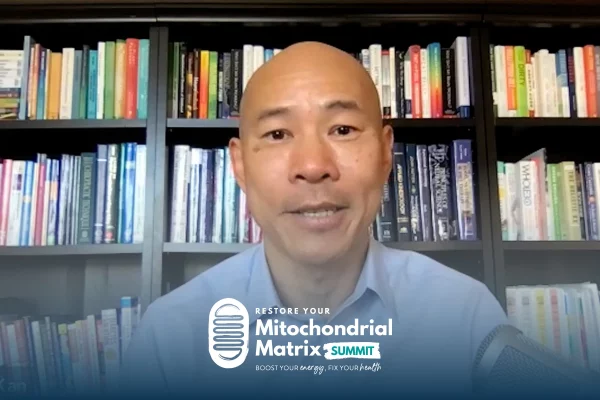Join the discussion below
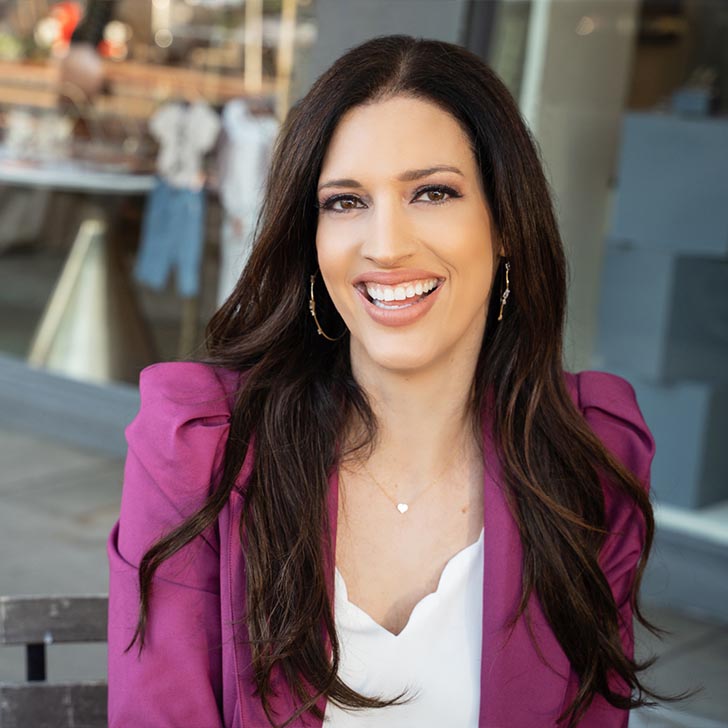
Laura Frontiero, FNP-BC, has served thousands of patients as a Nurse Practitioner over the last 22 years. Her work in the health industry marries both traditional and functional medicine. Laura’s wellness programs help her high-performing clients boost energy, renew mental focus, feel great in their bodies, and be productive again.... Read More
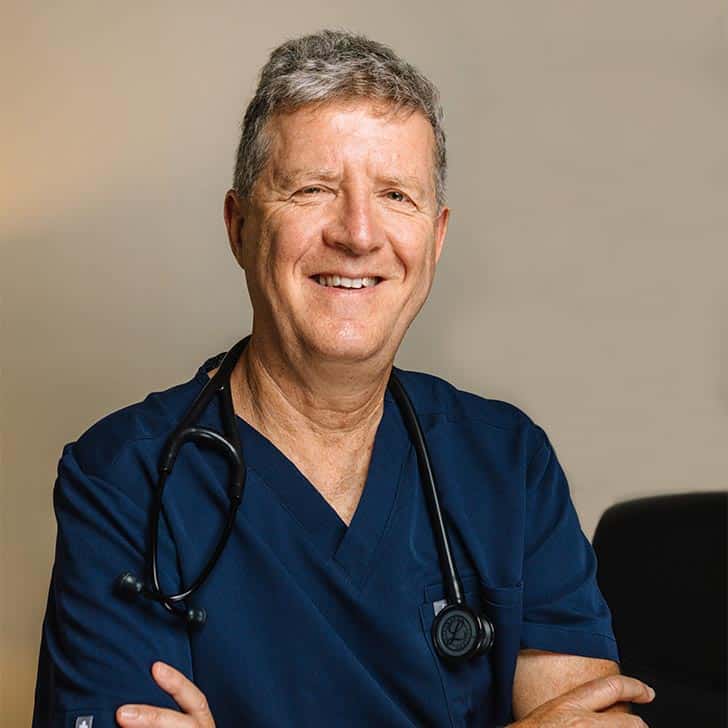
Isaac Eliaz, MD, MS, LAc has been a pioneer in the field of integrative medicine since the early 1980s, with a focus on cancer, immune health, detoxification and mind-body medicine. He is a respected formulator, clinician, researcher, author and educator, and a life-long student and practitioner of Buddhist meditation. With... Read More
- The concept of the Survival Paradox and how it impacts health and disease
- The Survival Protein, galectin-3 and how it contributes to inflammation and mitochondrial damage
- The role of toxins and the importance of safe detoxification in mitochondrial health and function
- Strategies to optimize mitochondrial health and function using an holistic approach
Laura Frontiero, FNP-BC
Welcome to the Restore Your Mitochondrial Matrix Summit. I’m your host, Laura Frontiero. I’m bringing you experts to help you boost your energy and fix your health so you can build the life you love. And today, my special guest is the esteemed Dr. Isaac Eliaz. Hi, Dr. Eliaz, welcome to the summit.
Isaac Eliaz, MD, MS, LAc
Hi, thank you so much for having me.
Laura Frontiero, FNP-BC
It’s wonderful to have you here. Your work and your life has taken you in so many directions and you’ve done such important work in the world, and we’re gonna touch into that today. And you’re an expert in the field of integrative medicine. You focus on cancer, detoxification, and complex conditions. You wear a lot of hats. You’re a physician, a researcher, a bestselling author, an educator, a mind-body practitioner. That’s a lot. You partner with organizations such as Harvard and the National Institutes of Health and Columbia University. You’ve co-authored studies in integrative therapies for cancer, heavy metal toxicity, and more. And I know that you just got grant funding from the NIH just recently to do another study, which is really exciting. And you’re the founder and medical director of, I’m gonna say it right, it’s Amitabha, Amitabha. You’re the medical director of Amitabha, tell us what that means in a moment, Medical Clinic in Santa Rosa, California. So welcome to the summit, and tell us what Amitabha means.
Isaac Eliaz, MD, MS, LAc
Amitabha means limitless light. It’s the name in Sanskrit and it reflects the healing aspect in a, you know, in Buddhism. And yeah, and I’m so glad. I’m so glad to be on this summit because really, all our health boils down to mitochondrial health. If we can heal the mitochondria, we can heal anything. And if we don’t heal the mitochondria, we can’t heal anything. It’s really the essence. So today I really want to acknowledge it, your work. And I want to a little bit offer, why it is what it is. What is really the underlying current and the in a deeper cause that causes us to go out of balance when it comes to mitochondrial health, and be practical about what can we do about it.
Laura Frontiero, FNP-BC
I’m so excited to jump into this talk. And I just wanna really thank you for that opening statement of if you can heal your mitochondria, you can heal anything. And this is why, when people ask me, “Why did you do a mitochondria summit? You’re a gut health expert. You help people detoxify their bodies from environmental toxins and mold and all of these things that we’re exposed to.” Because when it comes down to it, if you don’t address and support mitochondria, then you’re gonna have a really hard time getting better. So thank you so much for just bringing this all together, even in that one sentence. So we’re gonna talk about your concept of the survival paradox.
This is fascinating. You have a book on this and how this mechanism of survival actually impacts health and disease. So while our body is trying to survive and save itself, it can actually be harmful to us as well. So we’ll get into that. And we’re gonna talk about this survival protein, galectin-3, and talk about the role that toxins have in the body and the importance of safe detoxification, which is critical because you have to remove toxins to restore mitochondrial health and function. And we’ll just get into these strategies. So I’m gonna let you take it from here. And where does it make sense for you to start with all this? Where would you like to go first?
Isaac Eliaz, MD, MS, LAc
I think I will start with the big picture with the survival paradox.
Laura Frontiero, FNP-BC
Okay, perfect.
Isaac Eliaz, MD, MS, LAc
The survival paradox is really a simplification of a multi decade journey that I had, as you said, you know, I’m a clinician, I’m a medical doctor physician. I’m a licensed acupuncturist and I’m trained vertically in integrative medicine. Now years of classic homeopathy, years of nutrition, years of botanical medicine. At the same time, I’m a healer. And I spent decades meditating, starting at the age 15 and for 20 years, since age 30, spending two months a year in the mountains on my own, and 10 years meditating for half a day, and being able to treat the greatest, most famous meditation masters in the Himalaya. And in the same time, I’m a researcher. You know, I research, I publish papers. And when I try to really reflect a simpler understanding, a practical understanding, that really affects our life, who we are, how we live our life.
And then our health will transform, you know, as part of this, as an expression of this, I came with this concept of survival paradox. And the reason is that we are built to survive. It’s innate in us. We are built every cell in our body, every tissue, every organ, us as the person, our communities, and now even the whole world, right? With global warming. So it’s very basic. It’s built in us. And because it’s built in us and it’s innate, it has to be automated. Has to be, we can’t control it. And this is done through the autonomic nervous system through the sympathetic system. And what does the sympathetic system do? In a fraction of a second, it either fights, which results in inflammation, or it runs away and hides, which results in fibrosis or in creating hidden areas of micro environment, biofilm, atherosclerotic plaque, cancer environment, areas that are isolated. Great. We become isolated, which is a big issue now in general.
Laura Frontiero, FNP-BC
Mm-hmm.
Isaac Eliaz, MD, MS, LAc
So this is our response. And then within minutes, we have a biochemical response led by a protein called galectin-3, which I will talk more about later, which I’ve been researching since 1995 and made the key discoveries in inflammation and fibrosis.
Laura Frontiero, FNP-BC
Real quick, real quick, Dr. Eliaz You said within minutes, our body responds.
Isaac Eliaz, MD, MS, LAc
Right.
Laura Frontiero, FNP-BC
In minutes. This is a very, your body is so smart, and so reactive that within minutes, you’re already responding.
Isaac Eliaz, MD, MS, LAc
Biochemically already.
Laura Frontiero, FNP-BC
Yes.
Isaac Eliaz, MD, MS, LAc
Yeah, yeah. And so this was my whole approach. This is, you know what I’ve been yeah, definitely within minutes. So what I did, actually, interesting that you bring in this question, this was my approach. I’ve been researching sepsis, and the idea what happened when I blocked this protein, galectin-3 and then we induce sepsis in animals. And when we blocked galectin-3, and then we induce sepsis in the most acceptable model, what we found is one, we reduced the death in the animals from over 60% to 20%,
Laura Frontiero, FNP-BC
Mm-hmm.
Isaac Eliaz, MD, MS, LAc
We reduced dramatically the amount of acute kidney injury in the animal that is caused. But more interesting, we attenuated dramatically the rise of interleukin-6 because galectin-3, the survival response is up at the top, it’s upstream, and the dam opens and then everything washes out. That’s why, when we chase the cytokines, it’s too late. It’s too late. It’s like we have to shut it at the dam level. So for example, in our studies, we showed that galectin-3, after the induction of sepsis will rise, maybe will double, maybe triple. Interleukin-6, which will rise one or two hours later to a significant amount will rise 1000 fold. 10,000 fold because it such a downstream. And so this was my concept.
That’s where I got my first NIH grant. And now I got my second NIH grant. And in this instance, we’re trying to remove galectin-3 through a process similar to dialysis, apheresis, but that’s the idea. Our body is very smart. So the autonomic nervous system turns on. We take a few deep breaths, we relax. It turns down. Now we know if it turns on all the time, bad news. The biochemical system is more tricky. Once it turns on, and as we age and as we start developing habits and the genetic and epigenetic and past traumas and traumas are toxins, abnormal microbiome, heavy metals, mycotoxins, emotional traumas. We don’t let go. I like the image of, you know, a child three years old fight with his friend. And two minutes later, they forget, but the parent can remember for days and weeks, right?
Laura Frontiero, FNP-BC
Hopefully. Yes, so biochemically, what you’re saying is biochemically, We remember long term.
Isaac Eliaz, MD, MS, LAc
Oh, it turns on and it does not turn off. And this is what sets up practically every disease. If you look at every chronic disease, acute disease, I mean, initially the interest was in cancer and then in heart failure, kidney failure. But now with my work, we are realizing it’s actually derived sepsis. In fact, COVID patients, when they come to the emergency room, regardless of the involvement of the lungs, the level of galectin-3 at the admission in the emergency department will determine who will end up in the ICU.
Laura Frontiero, FNP-BC
Oh, that’s fascinating. So have you actually already studied this?
Isaac Eliaz, MD, MS, LAc
Yeah, yeah, yeah. This is a paper that one of my colleagues published, but I published a very important paper with really the leading critical care doctors in the world, John Calum. And we showed that when a patient comes to the ICU with sepsis, regular sepsis, no pre-existing conditions
Laura Frontiero, FNP-BC
Mm-hmm.
Isaac Eliaz, MD, MS, LAc
the level of galectin-3 at time of admission will determine who will get acute kidney injury and who will die in the ICU. And we showed the same thing with the patient after a bypass surgery of the heart. They come into the ICU, no pre-existing condition. Often it’s an elective surgery. And the level of galectin-3 at the time of admission to the ICU, you know, after the surgery will determine who will get the complication of AKI. And some of these are going to die. Why? Because galectin-3 is at the beginning of the process. So this is why understanding the survival paradox so you can see it’s really the beginning of the process. Once it hits the mitochondria, we got a lot of work to do.
But the good news, we can do it. And the more we understand the multifaceted multisystem approach, we can do it more efficiently and more easily. And that’s where medicine becomes an art, you know, that’s where medicine become functional medicine. Instead of pathology driven medicine, you know, pathology driven medicine is dead. When you look at a slide of the patient and you look at it under the microscope, this tissue is already different in the patient if he has more of it. The patient change. Time change, metabolism change, everything changes. So we’re interested in the movement in the change. And that really is wave of the future.
Laura Frontiero, FNP-BC
So this is fascinating. I wanna talk about this survival protein. So the survival protein, this is the survival paradox because this survival protein, galectin-3 is released in the body, but then it has this kind of problem of contributing to inflammation, mitochondria damage, being a precursor to cancer, sounds like heart disease, inflammatory diseases. So, you know, we have health practitioners watching this summit. We have consumers of healthcare watching this summit. Can you help people wrap their mind around, why does our body have this survival protein that causes so much damage? What went wrong?
Isaac Eliaz, MD, MS, LAc
Exactly. So the survivor protein embryonically when we are just being formed, survival is making sure the organs come out healthy. So galectin-3 intracellularly helps embryogenesis. When we are out in the world, survival is meaning that we have to repair any injury that happens to us. Emotional injury, psychological injury, toxins driven injury, accidents of all kinds. And that’s what galectin-3 drives. It drives the repair system. How does it do it? Through inflammation and through fibrosis. So it drives TGF-beta 1, it drives either the inflammatory pathway, just what I shared about interleukin-6 and it drives the TGF-beta fibromyocyte in the fibrotic pathway. And this is why there is so much interest in it, in diseases like NASH or like, you know, IPF, you know, Idiopathic Pulmonary Fibrosis and chronic kidneys disease where I’m doing a lot of work because it drives the process.
But how does it do it? It’s really the bus. So galectin-3 has this arm that attaches to carbohydrate to galecturonic acid. So different glycoprotein, glycolipids are attached to the galectin-3. Then the galectin-3 creates a pentamer and the pentamer attach to each other and they create a micro environment. They actually create a lattice formation, a coating. And under the coating, you got your micro environment. And what happened when you have coating, like biofilm, the biofilm is the gut. The basic structure is galectin-3. All the other phospholipids, everything, heavy metals, they are sitting on it. Now, and again ’cause there’s a limited time, I can’t describe too many studies, but galectin-3, you can have a signal in one specific organ. Kidney is especially important. And the galectin-3 will drive all the way and cause damage in the heart. So you got these shuttles, it goes to the area where there’s injury and it brings inflammation. It brings fibrosis. And then you get organ degeneration. And into this, we have to remember, we are not the only ones who want to survive. And this really resonates with your gut health, which is part of what you do. The microbiome also wants to survive.
Laura Frontiero, FNP-BC
Mm-hmm.
Isaac Eliaz, MD, MS, LAc
So our relationship with the microbiome, it’s really a community relationship. It’s mutual support. And when we imbalance it, the microbiome gets upset. Suddenly the used biofilm, and then bacteria shifts, right? SIBO is practically an epidemic right now. And you get the gut being attacked. You get leaky gut and then you get autoimmunity, et cetera. So if we look at this concept, and we look at COVID and we look at the spike protein, and we knew it because the papers were published in June 2020, we just couldn’t get hospitals to do clinical trials and pick us on my galectin-3 blocker natural product, the spike protein is practically lower. Identical to galectin-3. It is a survival protein of the COVID. And what does it cause? It causes a cytokine storm.
Laura Frontiero, FNP-BC
Mm-hmm.
Isaac Eliaz, MD, MS, LAc
Which is really the basis of my work for a very long time. So the idea is that when we regulate this response, when we need the repair, it will always happen when it’s needed, because the galectin-3 will be expressed. Is galectin-3 creating this ongoing damage that eventually doesn’t? So cytokine storm is the first step, later on, there will be immune suppression. We know, for example, people here who are interested in cancer, where mitochondrial health is in the basis of one, maybe to interject and say cancer is a metabolic disease. It’s really a metabolic disease. So if we look at immunotherapy, if the patient has high levels of galectin-3, they will not respond to PD-L 1 inhibitors. Because the galectin-3 will suppress our innate immune response. So that’s why it’s such a fundamental issue. And that’s why after being in this field for decades, you know, I started my journey, you know, as a teenager, but definitely I was already involved in the mid 80s, you know. That’s why I strongly feel that modified citrus pectin is the most important supplement one can take. And sometimes, yeah. Because of basic role and how you build on it in different angles.
Laura Frontiero, FNP-BC
Right. So we’re gonna get to talking about the solution. And I wanna, I’m trying to wrap my mind around. So we have this survival protein galectin-3. We have it. It’s embryonic. It’s helping the body have healthy organs in development. And I’m thinking that, and I asked you, what’s the flaw, what’s the problem? And I’m thinking, it’s not the flaw, isn’t in the human. The flaw is in the environment and all of the toxins and everything we’re being exposed to that’s stimulating this survival protein, galectin-3, and now there’s too much of it and it’s causing that inflammation of mitochondrial damage. Is that, am I going down the right path here?
Isaac Eliaz, MD, MS, LAc
We’re going down the right path. One of the paths. We naturally, as we age, we have inflammation. You know, as we age, we have our traumas, our difficulties and our responses to them. So what happens when you have too much galectin-3 for different reasons, it will, for example, block insulin receptors on the membrane. And then AMPK gets shut down, and then you get MTO1 rising up. Now, remember we have a micro environment outside. There’s no oxygen coming to the tissue. That’s what happened in cancer. You get HIF, Hyproxia Inducing Factor, rising and AKT, you know, different pathways. And then it stimulates PDK, pyruvate dehydrogenase kinase, PDH gets blocked, no mitrochondrial function.
Laura Frontiero, FNP-BC
Mm-hmm.
Isaac Eliaz, MD, MS, LAc
So what drives this, it’s survival, right? Because glycolysis produces energy hundred times faster. That’s what we need when we can’t take a deep breath, right? We are, it’s an emergency, but at a very heavy cost, extreme inefficiency, no one 18th of the efficiency and lactic acids and byproduct and worse hypoxia. And this is really the Warburg Effect. Really that’s how the cancer survives, but that’s also how autoimmunity happened. That’s how different metabolic diseases happen. And that’s why if we can open the mitochondria to function normal, of course, you need the cofactors, you know, the lipoicacid and the B1. But if we can get to a place where we can take a deep breath, often I ask my cancer patients.
Try. And when I do healing, just to connect and they connect to the place where, why they couldn’t take a deep breath, why the cancer cell felt like it’s under danger. If we look, what is a cancer cell, cancer cell is a cell that lost its understanding that it’s a part of a bigger community, that there is mutual support, and decided it doesn’t want to go into apoptosis like every other cell. It decided to survive. And then it identified with its survival. And then what happened when we identified too strong? We become aggressive and that’s a metastatic process. And what it’s driven? The more imbalance the metabolic process, the more aggressive the cancer, right? So you can see again how metabolic function is the basis of this. And the solution has to involve understanding the mitochondria, but also understanding the cell, understanding the membrane, understanding the extracellular space, and understanding the relationship between the 50 trillion cells in our body.
Laura Frontiero, FNP-BC
Okay. One more question. And then I promise
Isaac Eliaz, MD, MS, LAc
No, I love questions like this. The discussion.
Laura Frontiero, FNP-BC
So why, so you mentioned when people walk into the emergency room with COVID or people are admitted to the ICU, you can predict what the outcome is gonna be based on this galectin-3 levels. So here’s the question. Why some people have higher levels than others? What is going on there?
Isaac Eliaz, MD, MS, LAc
Okay. So it’s not necessarily that, even low levels of galectin-3 can be damaging. So people will have different levels of galectin-3 based on the metalloproteinases in their body, MMPs. And it’s different genetically. So galectin-3 can appear as a monomer, so then it will look like you have more. And this monomer is this single protein, which is about 30 kilodalton, can penetrate into small places, and then it will create a pentamer and will get things worse. For example, bone metastasis.
Laura Frontiero, FNP-BC
Mm-hmm.
Isaac Eliaz, MD, MS, LAc
And some people will have lower levels, but the importance of checking galectin-3 levels, well, it’ll be jumping, but it’s practical, especially for the doctors in the audience, is that you don’t decide if to use modified citrus pectin based on galectin-3 because the survival response is universal to us. That’s why you look at studies. You can see that MCPs in logistics with chemotherapy, so with so many things. You do it because if you are supposedly healthy and you have a high level of galectin-3, you know something is going on. That’s one. And the second thing, if you have more galectin-3, you need more modified citrus pectin. And so a cancer patient, if they have over 17, 18 nanogram ML of galectin-3, 15 grams is not gonna be enough for them. They need 20 grams. And for people who are relying on galectin-3, you cannot rely on the standard in the lab because the standard in the lab were done based on congestive heart failure, and these patients have kidney failure, so the levels are higher in the blood. Anything about 12, 13 is already a problem.
Laura Frontiero, FNP-BC
Okay. So now that we’ve established that it’s the problem, and thank you for entertaining my questions, ’cause I’m so curious about this. I mean, this is really interesting because I tell you, we didn’t learn about this in the Western world when I was working, and I certainly didn’t learn about this in the functional world either. This is a whole new concept, and I think it’s probably new to a lot of people watching as well, and I’m sure they’re having, they’re thinking “Oh my gosh,” they’re having questions right now. So at the end, we’ll make sure people know how to learn more about this too. So now, let’s talk about what to do about it. So if you establish that this survival protein, this galectin-3 is damaging and it’s predictable that it’s gonna be damaging as well. And it’s hurting the mitochondria, it’s driving chronic disease, it’s driving faster aging. So what do we do about it?
Isaac Eliaz, MD, MS, LAc
Right. That’s of course, that’s why the beauty of this talk that there are practical solutions. There’s no, need to just create fear about it. Yeah, there are solutions. So on the simplest level, I mean, PectaSol, modified citrus pectin, is a bonafide galectin-3 inhibitor with close to 80 published papers, practically all of them showing results from cancer to really, in multiple issues, multiple conditions. So that’s why it should be a part of our regimen. For example, if you look at centenarians and you compare them to people who are 70 or 80 years old, centenarians have a lower level of galectin-3 compared to 70 and 80. Remember, the 70, 80 have a few people who are gonna make it to be over a hundred years old. So that’s the basis, but then on a bigger, on a more holistic approach, and for me, I truly feel fortunate because I happen to start researching galectin-3.
I understood it is really not only the survival protein, when something creates a coating, it creates separation. It creates isolation between us. And that’s why it’s really damaging for fibrotic type heart failure. So it’s about melting this separation. How can we connect? How we can snap away from the survivor? So the first thing is behavior. Is behavior is like, where can we catch ourself and not respond in a survival mode. And in my book, Survival Paradox, I tell, I know I describe the galectins, I describe the survival concept, and it is a paradigm shift because, as we all know, we always blame inflammation for everything, for a good reason. But inflammation is not the cause of any disease. It’s a result.
What drives inflammation is a survival drive. So it’s like a new paradigm shift. And then today we are looking how it affects the mitochondira specifically. So now, when we really have this understanding, we can see what can get us out of the survival response. So in the book, like I mentioned, I go through all the different conditions after I explain the physiology. And then in the solutions, there’s one chapter about detoxification and then about healing the scout of survival. And I tell my story, coming from a family of Holocaust survivors, named after my grandfather, his name was Isaac, and how he got stomach cancer at the age 50 and how I was carrying some of his pain in my chest.
And now when I healed it, it affected my mother without her knowing. So this is a multi-generational healing that we have power to do. And when you do this, your galectin-3 will go down, but also your quality of life will go down because as we all know, and we should get the lesson the last two, three years, right? We have no control about what’s happening outside. The only thing we can control is our reaction. So the journey is a journey of shifting from reactivity. That is the expression of the survival to responsiveness, which is what happened when we connect with our heart. And that’s why the heart is a real medicine of everything. That’s what I call open heart medicine. That’s supposed to, it was supposed to be my first book. It’s gonna be my second book. Already wrote it, but in Hebrew. And in the process, galectin-3 is our biochemical messenger. So anything we can do behaviorally, food, supplement, you know, we were discussing the importance of binders because we are constantly bombarded by toxins. I mean you can’t escape pesticide. I mean, even if you buy organic, I mean, in a flat land, glyphosate travels miles and miles and miles, you know?
Laura Frontiero, FNP-BC
Yeah. So let’s give the audience context. So before Dr. Eliaz and I jumped on this interview, I mentioned to him that I take binders daily because I am a meat eater and there are toxins in the fat tissue of meat, even in organic meat. And I cannot avoid glyphosate. It’s in the air. I drink purified water, but I’m still not bathing every time in purified water, so I’m getting exposed. So take it from there. I mean, we cannot avoid toxins.
Isaac Eliaz, MD, MS, LAc
Right. And so it’s important for us to understand also we can’t isolate it. So we all are exposed to heavy metals. You know, of course now there’s no leaded gasoline, but like small planes still have leaded gasoline, you know? And so you get heavy metals from so many places. You get mycotoxins, that high expression of dimmedness, you know, and biofilm, and then you get pesticide. And I think people don’t recognize there are like 330 million million pounds of glyphosate a year being sprayed in the United States a year. Okay? So, you know, we live in California, it’s a little bit cleaner, but people in the Midwest like, next to a corn field or a soil field. And what happens, so if you look at glyphosate and then there like glyphosate formulations. The formulation can be more toxic then the glyphosate.
So what it does, it robs the plant of minerals, of nourishment, but well, once it’s in formulation and once it affects our microbiome, it starts affecting our own ability to absorb. And it affects the lining of our gut. And then, because it’s so similar to glycine, it can exchange and mimic glycine in the brain, in connective tissue, in detoxification pathways, and it really increases the likelihood of chronic kidney disease. So that’s only one pesticide. And of course we have all the industrial toxins. You can live in the most pristine, expensive area, that often I work with people from the South Bay from Silicon Valley.
Very affluent area to say the least, but the planes are flying above it to SFO, so they get MTB byproduct. You see all of them in the urine test. So you get all this mixture. So we really have to take care of them, so PectoSol, modified citrus pectin was multiple paper published to be a very excellent binder for heavy metals. Systemically, it gets absorbed. So we have a systemic binding, some in the gut. Also it bind to some mycotoxins, but we have to prevent reabsorption. And that’s why it’s important to have binders in your arsenal. But the basic difference between MCP and the regular binder is that because it blocks galectin-3 and breaks the biofilm, and it’s a published, proven prebiotic, you know, it enhances for example, the effects of antibiotics and different infections and supports normal flora. We published a number of papers with the USDA. While it binds,
Laura Frontiero, FNP-BC
So real quick, Isaac. You’re talking about modified citrus pectin, right? When you say MCP I just wanna make sure everybody understands what you’re talking about.
Isaac Eliaz, MD, MS, LAc
Yeah. Yeah. Right. And the research was specifically done on PectaSol. Yes, talking about MCP. So MCP, at the same time while it removes heavy metals and toxins, it reduces inflammation. It allows the gut to heal. So that’s one approach, but the issue is that we need a wider array of binders in addition. And I admit, you know, I overlook pesticide and the reason why I overlooked them for many years is, you know, we all got trained to accept them. It’s okay to have a normal level. Like, it’s okay to eat a little bit of poison every day. Right? This is pretty much what we are being told.
Laura Frontiero, FNP-BC
Brainwashed. We’re being brainwashed to believe that.
Isaac Eliaz, MD, MS, LAc
Exactly. And then I realized, wow, I could see our patients who are not responding to treatment. That’s the issue. So I really embarked on it in the last few years. I’m now in the middle of clinical trial, proving it because I like to, I know I’m a researcher also, but I believe in the wisdom of nature. So if we look at glyphosate and we look at pesticides, they affect our plant that affect our meat, just like you shared, they affect our water and they affect our soil. So well, always there is a problem. Nature is offering us a solution. That’s how things work. So when I formulated a product called GlyphoDetox, I took regular high molecular pectin, which is more fat soluble and doesn’t get absorbed. So it binds to mycotoxins, to lipid soluble toxins.
I took algenate, which I do a lot of research for decades, which is a different profile than pectin. It’s a similar group called polyuranite. And then I took also kelp. Why? Because kelp is alive. Kelp is minerals. Kelp is protein. We need to support the detox process. And also it will help to exchange and remove negatively charged ion, like bromide fluoride. And then I took folic acid from shilajit, from clay because this material goes through the rocks, 30 to 50 million years. Million. And it binds to glyphosate. It stabilizes the gut lining and also support the nervous system. It supports mitochondrial support. It’s good for nerve inflammation. So I was able this way, I’m covering the whole ground.
And then I used glycine of course, to exchange with glyphosate, to stabilize the gut lining and to help glutathione pathways. So for my approach, usually, for people who wanting to really detox, it’s about using the MCP with the GlyphoDetox. It’s a very simple, I call it the mycotoxin rescue kit, the pesticide rescue kit. And interesting, now that I introduced it to the world, we are getting phenomenal feedback. Really it’s like, it makes your day when you get the stories, “No, 20 years, nothing helped me,” et cetera. In the same time, we got to take care of the gut with the right prebiotic probiotic and everything now that you’re talking about.
Laura Frontiero, FNP-BC
What are people noticing? So when they use this modified citrus pectin, and this kit that you put together with all the binders, what you said, nothing’s helped them. What are they noticing? What?
Isaac Eliaz, MD, MS, LAc
So interesting. One of the first things that many people notice is that the digestion starts to improve, but mainly, but also that their head is clearer, that their joints are better, that their energy is better. So initially, the whole work on galectin-3 was around cancer. From the early nineties, published my first paper on prostate cancer and modified citrus pectin in ’97. But then I noticed that people’s joints are getting better. People’s memories are getting better. And blood pressure is regulating for some people. And that’s very early on, late ’99. That’s why kind of, I made my initial discoveries, you know, and I have the discovery, the patents, and I started the research on it. And then by two 11, it became the focus of the whole world, galectin-3 and inflammation. So it took about 11, 12, 13 years, but that’s fine. It’s so much bigger than me now. All the papers are published by independent. Now, most of them, I do my research.
It’s much bigger than me. And like, you know, we say in our field first, they ridicule you, then they fight you, and then they say, it’s self evident. So now I’m at the self evident phase, but for me, this symbolizes our need to move from struggle, from fighting, from survival, into harmony and mutual respect. And this is really why I’m now making it a mission. Now, people who know me say, “Isaac, my God, you are the best kept secret in town.” I was too busy meditating or treating people or doing research. And I’m not shy about talking, as you can see. Now it’s about me share, you know, in my sixties, it’s about sharing my heart and sharing these decades of knowledge because we are using medicine to change the way we live our life. And from your perspective, mitochondrial function is the essence, because if we look at us, we are one organism. We have a, let’s say round up 50 trillion cells. Not so many doctors notice I checked it. I didn’t know. You know how many reactions every cell has every second?
Laura Frontiero, FNP-BC
No.
Isaac Eliaz, MD, MS, LAc
Take a guess.
Laura Frontiero, FNP-BC
I think it’s in the hundreds of thousands.
Isaac Eliaz, MD, MS, LAc
You are smart. Up to a million. Every second, you get 50 trillion cells, million reaction a second, and we are still functioning. Truly a miracle. And then 50 to 100 trillion organisms in our gut also helping us. And all of it is working together. Now, each cell has a boundary, right? Each cell decides what comes in and what goes out. And we’ll talk a moment about it because in a moment, because it really relates to understanding of detox and transformation. But within the cell, the smallest independent organism is a mitochondria, which also the oldest part of the cell. The mitochondria decides where it’s gonna take stuff for energy. Is it gonna be through sugars, through the PDH, is it gonna be through lipids? So the mitochondria itself and its relationship, which is affected by our genetic, by our epigenetics.
So when we are balancing our mitochondria, and often in my book, you know, I relate to organs, of course, but to cells, is like living creature. They have feeling, they have emotions. When the mitochondria’s happy, it will take its time. But when we go into crisis, it’ll go into glycolysis. And if the crisis is long term, it will go into ketosis. That’s why you and I discussed before this, and we agree. Ketogenic diet is not a long term solution because if it’s an alternative long-term survival solution. If it was the bad thing to do, the body, would’ve done it all the time. You know? So the mitochondria contains this ability to change everything for us, but in order to change it, we got to think so much bigger than the mitochondria. And we have to understand, the mitochondria is the energy production reflection of who we are, how we live our life, how toxic is our environment, toxins of all kind, you know? And you know the only thing we cannot control what happened on the outside. The only thing we can control is our reaction.
If we are in a reactivity, we’re in a survival mode, there is no way the mitochondria is not gonna function right. So yeah, NCP will happen on one level. They’ve shown, for example, the patient after myocardial infraction, who immediately listen to music or meditate, their galectin-3 goes down, and they have less damage in the heart. And even six weeks later, when they meditate the same meditation, galectin-3 goes down. So this shows us right? The biochemical relationships. So yeah, of course we wanna block it. That’s easy, but we also want to see how in our life we can shift from survival to harmony. And when you’re ready, I will share the secret for this.
Laura Frontiero, FNP-BC
Well, definitely tell us the secret. What is it?
Isaac Eliaz, MD, MS, LAc
So if we look at our body, every organ in the body, every cell has its own boundaries. It takes in nourishment and it releases toxins. There’s only one organ in the body that functions differently. The organ that is part of its survival, takes the toxicity from everybody, all the difficulties from all the organs. It doesn’t say only from the liver, only from the kidney. It’s our heart. It takes all the dirty blood. It connects with the universe with the breath, because our drama is insignificant for the infinite space. And you know, it’s interesting the molecule of air in our mouth, or our nose, when we just as we breathe it here, it’s connected with the whole universe, practically, you know, think about it. Amazing. We let go of what we wanna let go. We take oxygen. There is an exchange in the lung. It is serving the heart. And then the heart gives without discrimination. You know, the aorta is a stiff artery, as we know. It doesn’t decide blood will go only up, only down. It goes everywhere. And who does the heart nourish first? Is part of nourishing the whole body.
It nourishes itself through the coronary arteries. So this is self nourishment. Self love is part of loving others. Not narcissistic because interesting enough, one more thing. And I always like to, it’s like this, when this physiology occur to me a few years ago, it was like, “oh my gosh,” the heart is the only organ that nourishes itself after it finishes it’s work, you know, think about it. We could have had the coronary artery in the right atrium, right? When the blood comes in or in the left atrium, for example. No, we get the supply only when we are done. So the heart is a selfless organ and the selflessness of the heart is its survival role. That’s why the transformative organ in so many traditions, religion belief system, et cetera. And it’s happening anyway, physiologically, even if we are not following it and we are reactive, but because it’s physiological, it’s easier to connect with it through meditation, through different methods.
And this is open heart medicine. It’s connecting with who we really are. And when we connect, things change, you know, I just had an experience. I’m right now in Hawaii because I got COVID in Israel 45 minutes before starting to teach a retreat to 250 people for seven days. So I recovered quickly, even was able to join the retreat, but it affected my blood pressure, you know, up and down and really crazy numbers, double medication. So, you know, I came here and I’m still working, but for three days, I just connected with this letting go. My blood pressure now is normal. Better than it was before this whole thing started. Why did it happen so quickly? Because I’m just more trained in connecting with this infinite healing potential. The infinite healing potential in our body is sitting in our mitochondria. That’s where we can decide if we’re gonna open up, tell the PDK, the HIF, the MTO1, just relax. It’s okay. Mitochondria opens up. It affects every, so that’s why I started with this statement because it’s not just a, it’s a very important statement for people to understand. It’s all mitochondrial health. It’s the root of everything. And it stems from understanding that we have to shift from our survival drive.
Laura Frontiero, FNP-BC
So talking to you is like speaking to an expert in biochemistry and mind body at the same time. Biochemistry meets mind body medicine, which is rare. You don’t meet many people who can speak so expertly and eloquently on both sides. So thank you for marrying all that and bringing it back to the fact that we have the ability to heal. We have the ability to heal ourselves, and that mitochondria is the root of that. Now, I know that people want more of you through this interview. I know like we could talk for a whole nother hour and just keep going longer and longer, but maybe we’ll have to do a second interview to keep this conversation going. But for now, can you share with our audience how people can find you, how people can find your support in all ways? ‘Cause you have a full supplement line as well.
Isaac Eliaz, MD, MS, LAc
Of course. So they can go to survivalpower.com about the book. They can go to dreliaz.com, D R E L I A Z .com. They can go to econugenics.com or to PectaSol, but if you go to my site, dreliaz.com, it will guide them. And we are going to offer all the participant an excerpt, certain excerpt from the book, which I think are important for understanding mitochondrial function. And yeah.
Laura Frontiero, FNP-BC
That’d be excellent. And for econugenics, that’s your website where people can get your supplements, right? And the public can purchase supplements there as well?
Isaac Eliaz, MD, MS, LAc
Yes.
Laura Frontiero, FNP-BC
Okay. So I know people are watching right now and they’re wondering, “what should I do?” You know, people like to DIY, right? They like to do it themselves and figure this out. So I guess a question is, is this supplement okay for everyone to take? Is there anybody who should not use PectaSol?
Isaac Eliaz, MD, MS, LAc
Oh yeah. Again, PectaSol specifically, there’s a lot of borrowed science for my work. Because modified citrus pectin is a generic term, so anybody can put a pectin in and put on it. It’s really PectaSol, yes. Is the only people who cannot use PectaSol are people with, they can use it in smaller amount still, is people with severe kidney failure. Severe meaning EGFR under 15, literally advanced is stage four.
Laura Frontiero, FNP-BC
We call it end stage renal disease.
Isaac Eliaz, MD, MS, LAc
Exactly. Exactly. End stage renal disease. They, because it’s buffered with potassium and sodium, so they’re limited in how much they can process. Of course it’s ironic because PectaSol, because modified citrus pectin by blocking galectin-3 helps kidney disease. So if you are 20 EGFR, you can already take the full dose. But if you are around 20, you take only 10 grams. And if you are at 15, you take only five grams.
Laura Frontiero, FNP-BC
Yeah,
Isaac Eliaz, MD, MS, LAc
Yeah, yeah. But otherwise, no, it’s really a sophisticated fiber.
Laura Frontiero, FNP-BC
Okay. So pretty much we’ve established. Most of our audience is gonna be okay unless you are on dialysis or knocking the door of needing dialysis, talk to your nephrologist. Right? Of course we always say a disclaimer, any supplements you’re gonna take talk to your health practitioner first, but we’ve established that this is a very safe product, PectaSol products. Wonderful. Well, thank you so much for being here, for the work that you do and congratulations on your upcoming study with the NIH. Do you wanna share real quick what that’s gonna be about?
Isaac Eliaz, MD, MS, LAc
Yeah. Well, it’s really a large animal safety study to show that the galectin-3 apheresis is safe. So we have to develop the regulatory column and show and then we are onto human clinical trials.
Laura Frontiero, FNP-BC
Excellent. Congratulations on that. I can’t wait to hear more. I hope you stay connected with me and keep.
Isaac Eliaz, MD, MS, LAc
We will. We will, because we really resonate in our understanding and you know, the dynamism of transforming our health, you know?
Laura Frontiero, FNP-BC
Yes. Well, thank you so much for being here.
Isaac Eliaz, MD, MS, LAc
Yeah, thank you. Thank you. It was great. Thank you for having me.
Laura Frontiero, FNP-BC
You, you take good care. Bye now.
Isaac Eliaz, MD, MS, LAc
Bye.
Downloads
